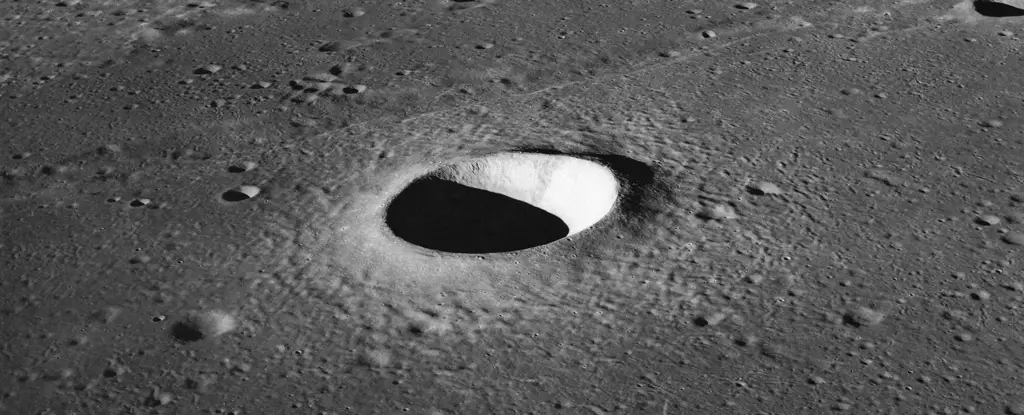The surface of the Moon, scoured and battered, is a striking testament to its history. Countless impact craters of varying sizes litter its landscape, some mere grains of sand while others span more than a thousand kilometers. Primarily dating back to the Late Heavy Bombardment, approximately 4 billion years ago, these craters reveal a turbulent time in the Solar System characterized by relentless asteroid and comet impacts. Unlike Earth, where the atmosphere, weathering, and tectonic activity continuously reshape the environment, the Moon’s lack of significant geological processes allows it to serve as a pristine record of our celestial near neighbors’ chaotic past.
The craters act not merely as scars but as historical markers, preserving vital evidence about the formation and evolution of the inner Solar System. The static nature of the Moon means that these features have remained intact for billions of years, providing a rich resource for scientists eager to delve into the processes that have shaped not only the Moon but also the Earth.
The Dance of Ejected Material
During the creation of these craters, a fascinating aspect comes into play: the ejection of lunar material into space, with some debris achieving enough velocity to escape the Moon’s gravitational grip and reach Earth. Understanding this transfer of material is crucial for piecing together the history of our planet. The implications are enormous, offering insights into how celestial bodies interact, how life on Earth has been shaped by external factors, and how our own planet’s geology has been influenced by lunar events.
Recently, a team of researchers led by Jose Daniel Castro-Cisneros has harnessed advanced computational models to enhance our understanding of lunar ejecta. Their study marks a shift from previous investigations, utilizing improved simulation techniques to explore a broader range of ejection scenarios. This innovative research illuminates how much lunar material collides with Earth over extensive timeframes, thereby contributing significantly to our knowledge of near-Earth objects.
Pioneering Simulation Techniques
The innovative approach of employing the REBOUND simulation package represents a significant advancement in this field. Unlike earlier studies that assessed separate phases of lunar material ejection, this research simultaneously modeled the interactions between the Earth and the Moon. By tracking lunar particles over a staggering 100,000 years, the researchers captured a more holistic view of how material leaves the Moon and subsequently collides with Earth.
They meticulously recorded data every five years, defining collision events in a more nuanced manner by setting a threshold of ejecta reaching 100 kilometers above Earth’s surface. This method yields a comprehensive understanding of the material transfer dynamics between these two celestial bodies. Notably, findings indicate that around 22.6% of the ejected material finds its way to Earth, with a staggering portion of this occurring within the initial 10,000 years after ejection.
Patterns of Impact and their Cosmic Significance
The study also illuminated intriguing patterns relating to the trajectories of lunar ejecta. It revealed that the probability of lunar material impacting Earth is significantly higher when the material is launched from the Moon’s trailing side, in contrast to the leading side, presumably due to the gravitational dynamics involved. Upon reaching Earth, this lunar debris travels at speeds ranging between 11.0 to 13.1 kilometers per second, with particular concentrations of impacts near the equator.
In a noteworthy observation, the collisions exhibited a symmetrical distribution around morning and evening hours, peaking around 6 AM and 6 PM. These findings not only contribute to our understanding of past lunar events but also reinforce the hypothesis of lunar origins for certain near-Earth objects, such as Kamo’oalewa, which is speculated to be a remnant of our cosmic satellite.
A New Chapter in Earth-Moon Dynamics
The research conducted by Castro-Cisneros and his team marks a pivotal development in our comprehension of the exchange of materials between Earth and the Moon. By demonstrating that nearly a quarter of lunar ejecta impacts Earth within just the first 10,000 years, the implications are profound for both planetary science and our understanding of the dual history shared by these two celestial bodies.
The observed patterns of impact also open new avenues for exploration in planetary geology and asteroid dynamics, underscoring the importance of the Moon not just as a subservient satellite but as a critical player in the broader narrative of our Solar System’s evolution. This complex interplay between the Earth and the Moon enriches our understanding of their mutual histories, enhancing the narrative of life on Earth and the celestial events that have influenced it over billions of years.


Leave a Reply